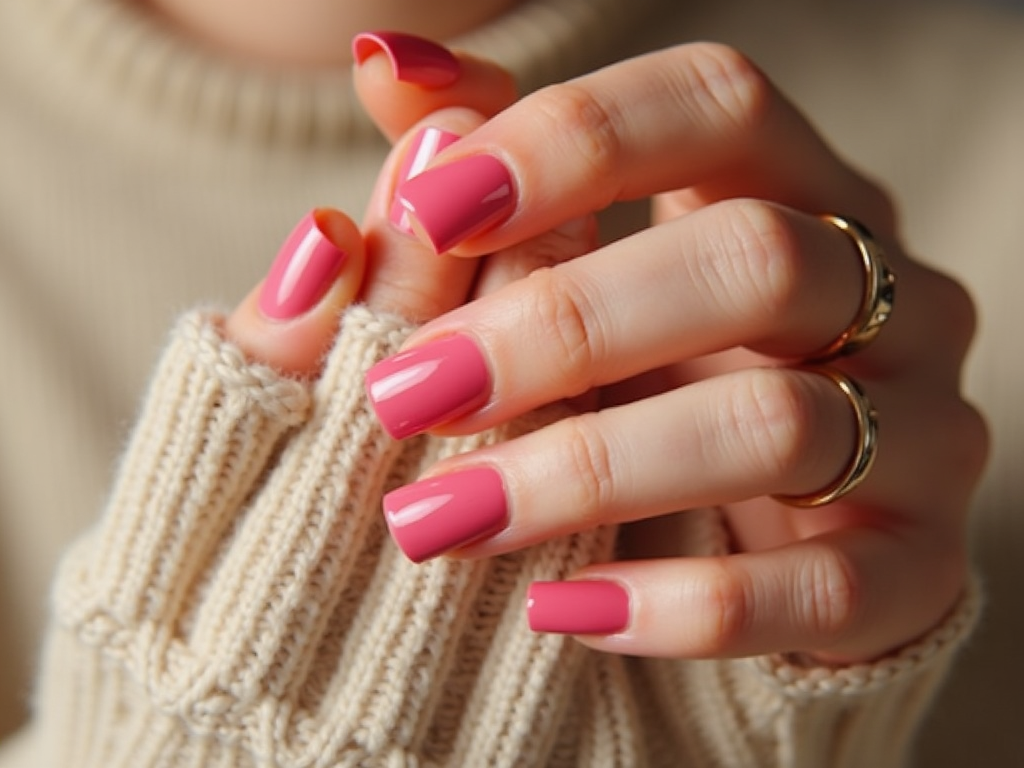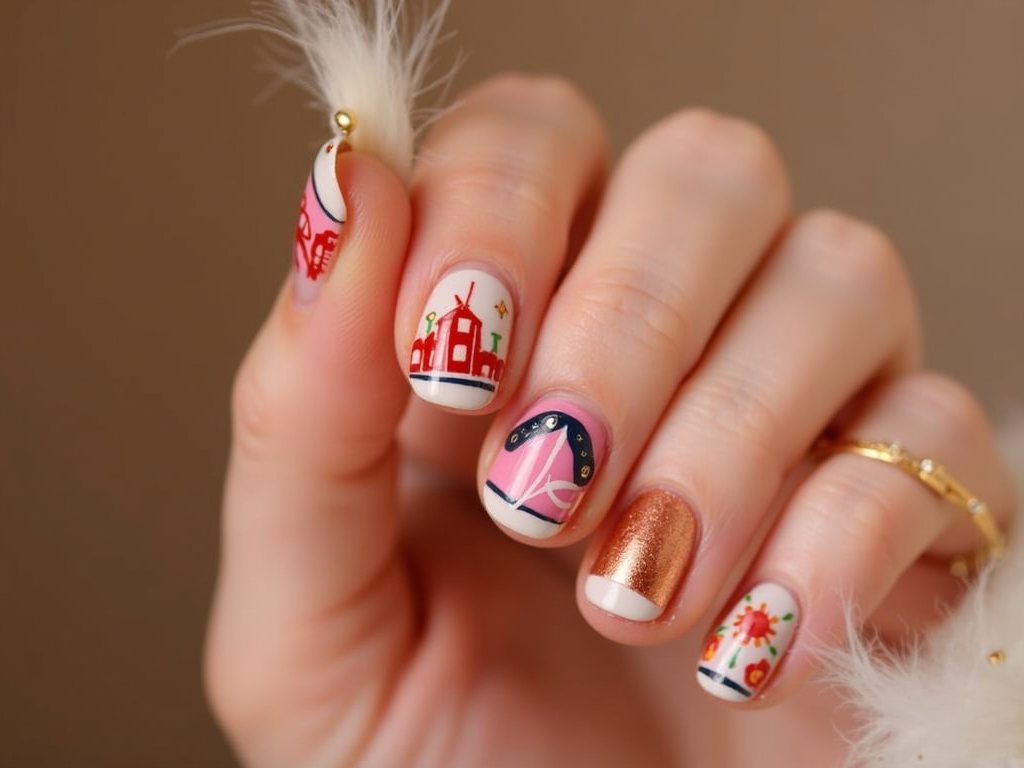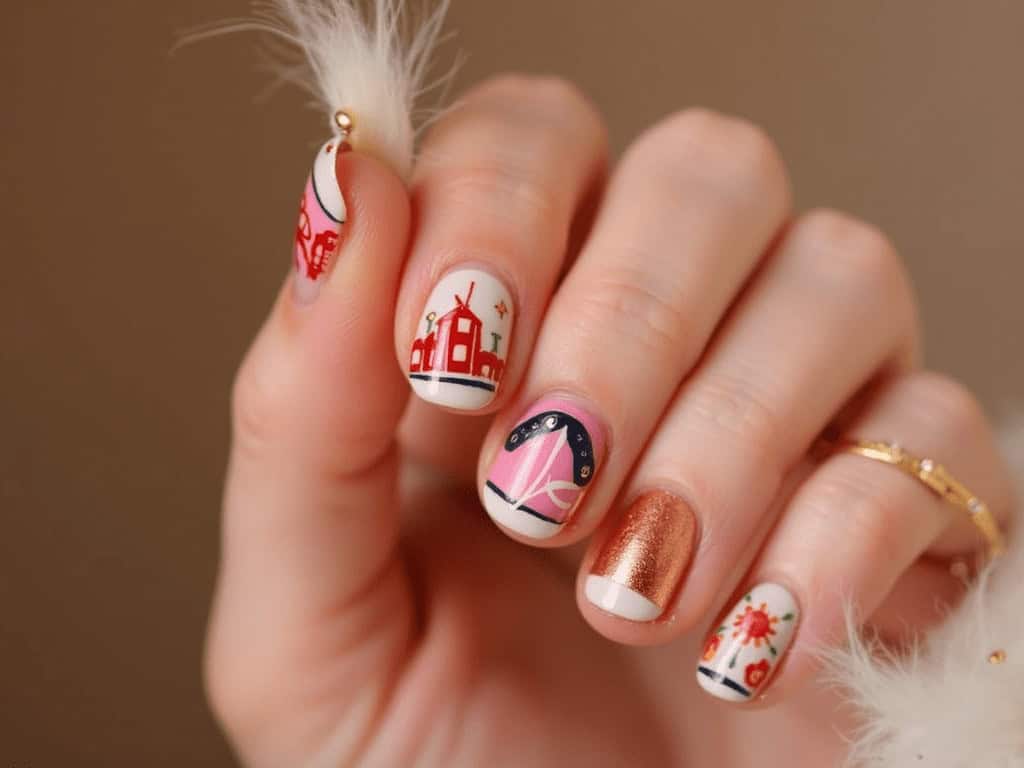The Secret Political History of Your Manicure: How 100 Years of Nail Styles Shaped Revolutions
Your grandmother’s ruby red nails weren’t just a fashion choice. They were a political statement. A class marker. Sometimes even an act of rebellion.
For the past century, women (and men) have been using their fingertips to wage silent wars. Signal allegiances. Challenge the status quo. Yet most nail history articles treat this fascinating story like a shallow fashion timeline.

They’ll tell you when French tips became popular. They won’t tell you why Chinese aristocrats were painting their nails 5,000 years before Revlon existed. Or how a single ingrown toenail in 1830s France accidentally created the modern beauty industry.
This isn’t another decade-by-decade nail trend roundup. This is the story of how ten tiny canvases became battlegrounds for power, identity, and revolution.
From Cleopatra’s Death-Penalty Manicures to 1940s Victory Nails: When Polish Became Power
Cleopatra didn’t wear ruby red nails because they matched her outfit. She wore them because in ancient Egypt, only royalty could wear certain nail colors.
Think about that. Your nail polish shade literally determined whether you lived or died. Lower classes caught wearing the wrong color? Execution. Talk about high-stakes beauty standards.
Fast forward to 1942. American women are painting tiny V’s on their nails. Victory nails, they called them. Seems cute, right?
Wrong.
These weren’t Instagram-worthy nail art designs. They were political protests disguised as patriotic support. Women working in factories couldn’t grow long nails. So they painted symbols of defiance on what remained. Short, practical nails became badges of honor.
The message was clear: we’re sacrificing our beauty standards for the war effort. And we’re proud of it.
The 1960s brought another nail revolution nobody talks about. While historians focus on burning bras, they miss the nude nail movement. Young women rejected their mothers’ bright reds for pale, natural shades.

Why? Because red nails meant trying too hard. Playing by men’s rules. The nude nail was the middle finger to traditional femininity. Subtle? Sure. But revolutions often start with whispers.
The Vietnamese Nail Empire Nobody Saw Coming
Here’s what kills me: modern nail art activism gets dismissed as superficial. But Vietnamese refugees didn’t build a billion-dollar nail salon empire in America by accident.
They turned a skill learned in refugee camps into economic power. Every time you get a manicure at a Vietnamese-owned salon, you’re participating in one of the most successful immigrant success stories in American history.
That’s not superficial. That’s survival.
But this political power play didn’t start in Egypt or end in American nail salons. The real story begins 5,000 years ago in Asia, where nail art wasn’t just invented—it was perfected.
The Asian Nail Revolution Western Beauty Brands Won’t Admit Happened
Your gel manicure? Chinese invention. That metallic nail trend everyone’s obsessed with? The Chou Dynasty did it first in 600 BC. With actual gold and silver dust.
Western beauty historians love to pretend nail polish started with some French manicurist in the 1920s. Total BS. Asian cultures were mixing egg whites, beeswax, and flower petals to create nail lacquers when Europeans were still figuring out basic hygiene.
Here’s the part that’ll blow your mind: Indian henna artists were creating intricate nail designs 5,000 years ago. Not just decorative—medicinal. The henna cooled the body. Prevented infections. Marked major life events.
Birth. Marriage. Death.
Every design told a story. Meanwhile, Western nail history books start their timelines in the 1920s like nothing existed before jazz music.
The Chinese didn’t just invent nail polish. They invented the entire concept of nail art as status symbol. During the Ming Dynasty, aristocrats grew their nails so long they needed special nail guards. Made of gold and jewel-crusted silver.
These weren’t fashion accessories. They were power moves. Long nails proved you didn’t need to work with your hands. The ultimate flex.
Cultural Theft in a Tiny Glass Bottle
But here’s where it gets dark. When Western beauty companies finally ‘discovered’ these Asian innovations, they didn’t credit the source. They repackaged ancient techniques as modern inventions.
French manicure? Inspired by Japanese nail art traditions. Nail gems and 3D decorations? Korean nail artists were doing that decades before it hit American salons. The 2010s nail art revolution everyone credits to Instagram? Built on techniques Asian immigrants brought to America. Taught in strip mall salons while fashion magazines ignored them.
The real kicker? Those same magazines now call Korean nail art ‘trendy.’ Like it just appeared out of nowhere.
Cultural amnesia at its finest.
Speaking of amnesia, the beauty industry has been feeding you myths about nail care for decades. Time to shatter some illusions.
The Royal Foot Infection That Created Modern Manicures (And Other Myths)
Let me tell you about King Louis Philippe’s ingrown toenail.
No, seriously.
In 1830, the French king’s foot problem changed beauty history. His doctor had to call in a specialist. Not a medical doctor. His niece’s manicurist.
This wasn’t because manicurists were respected medical professionals. It was because only servants touched feet. The king needed someone with ‘clean’ hands.
That manicurist turned a medical procedure into a luxury service for the elite. And that’s how modern manicures were born. From a royal foot infection.
Glamorous, right?
Myth #1: Nail Care Started as Beauty Treatment
Nope. It was medicine.
The word ‘manicure’ literally means ‘hand cure.’ Early practitioners were more like nurses than beauticians. They treated infections. Ingrown nails. Circulation problems.
The beautification part? That came later. When rich people decided medical care should also make them look good.
Myth #2: Men Never Wore Polish Until Recently
Ancient Babylonian warriors painted their nails black before battle. Roman generals buffed their nails to mirror shine. The idea that nail care is feminine? That’s a 20th-century marketing invention.
Companies needed to double their customer base after WWI killed off too many men. Solution? Make nail polish exclusively female.
Worked so well we forgot men ever participated.
The Working Woman’s Nail Rebellion
The biggest lie? That long nails equal lazy rich women.
Sure, Chinese aristocrats grew them long to show off. But working women throughout history found ways to maintain beautiful nails while laboring. Medieval washerwomen created nail hardening recipes from household ingredients. Factory workers in the 1940s invented quick-dry formulas. They could paint their nails on lunch breaks.
The myth that nice nails mean you don’t work hard? That’s just another way to police women’s bodies.
Modern nail salons perpetuate their own myths. That UV lamp for your gel manicure? Same radiation as tanning beds. Those ‘strengthening’ treatments? Often damage your nail bed worse than doing nothing.
But the industry won’t tell you that. Bad for business.
So how do you navigate this minefield of myths and hidden histories? Time to decode your own nail story.
Your Nails Are Speaking. Are You Listening?
Your nails tell a story whether you know it or not. Every color choice. Every shape. Every bare nail is communicating something.
The question is: are you writing that story consciously?
For 5,000 years, humans have been using these ten tiny canvases to signal everything from divine power to political resistance. Your nude manicure connects you to 1960s feminists rejecting beauty standards. Your stiletto nails echo Chinese aristocrats asserting dominance. Your chipped polish might be channeling 1990s grunge rebellion.
You don’t even realize it.
The next time someone dismisses nail art as frivolous, remind them that entire empires rose and fell based on who could wear what color on their fingertips. Remind them that refugees built economic powerhouses one manicure at a time.
Remind them that sometimes revolution comes in a tiny glass bottle.
Now look at your hands. What story are you telling?





